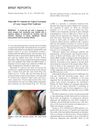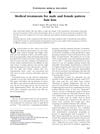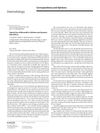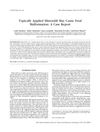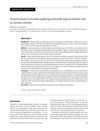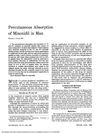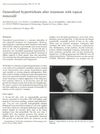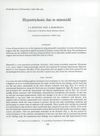Infantile Generalized Hypertrichosis Caused by Topical Minoxidil
February 2016
in “
Anais Brasileiros de Dermatologia
”
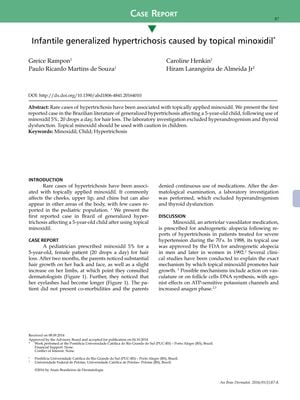
TLDR Topical minoxidil can cause excessive hair growth in children, so use it carefully.
In 2016, a case report from Brazil documented the first instance of generalized hypertrichosis in a 5-year-old girl following the use of topical minoxidil 5% (20 drops a day) for hair loss. The child developed substantial hair growth on her back, face, and limbs, and her eyelashes became longer after two months of treatment. Laboratory tests ruled out hyperandrogenism and thyroid dysfunction. The report highlighted that while minoxidil is an FDA-approved treatment for androgenetic alopecia, its mechanism of action is not fully understood, and it is known to cause hypertrichosis more frequently in women than men. The case suggested that systemic absorption of minoxidil might vary among individuals, and children could be more susceptible to its systemic effects due to their lower body weight and greater body surface area relative to weight. The authors concluded that caution should be exercised when using topical minoxidil in children.
